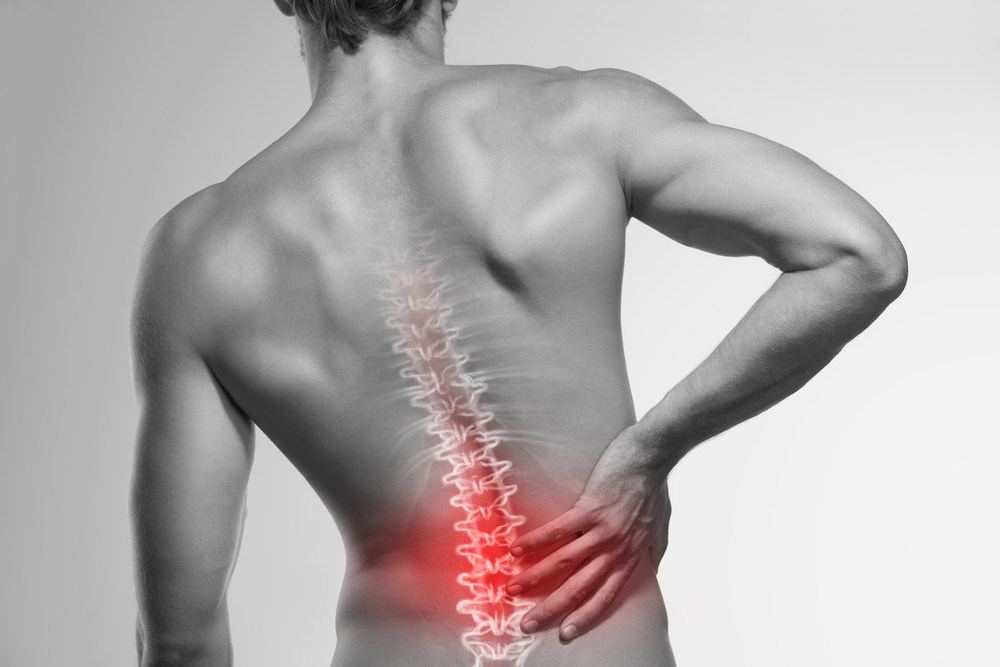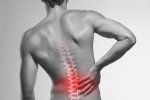
The marvelous strength and flexibility that's engineered into your lower back also make it susceptible to developing lots of problems. And because of the many nerves that run throughout the spine and into the rest of your body, a problem in the lower back can lead to leg pain, hip problems and more.
Why is Your Lower Back So Prone to Injury?
The lower back is subject to injury while lifting a heavy object, twisting, or a sudden movement—any of which can cause muscles or ligaments to stretch or develop microscopic tears. Over time, poor posture or repetitive stress can also lease to muscle strain or other soft tissue problems.
And while a muscle strain sounds simple, in the lower back the pain from a simple strain can be severe.
The lumbar spine has 5 motion segments. Most twisting and bending are divided among those segments, although the majority of the motion takes place in the lowest two segments, called L4-L5 and L5-S1. The structures in these two lowest segments are the most likely to wear down over time or be injured.
Tips to Prevent Lower Back Pain
- Exercise your core. Strong core muscles are important to provide support for the lower back and avoid injury. Low-impact cardiovascular exercise—like exercise walking—increases blood flow to the spine, which supplies healing nutrients and hydration to the structures in your lower back.
If exercise seems impossible to you, make small goals to slowly get yourself moving, such as going up and down your stairs 3 times in a row, walking with a friend, or sitting on an exercise ball for 20 minutes.
- Correct your posture. Poor posture places pressure on your back and can cause degenerated discs to become more painful. Support the natural curve in your lower spine by using an ergonomic chair and set a timer on your phone to remind yourself to check your posture as your work throughout the day. Make sure to get up and walk around at least once an hour if you sit most of the day. If you can, use a standup desk for at least part of the day.
- Lift heavy objects correctly. Even if you're young and strong, you can still injure your lower back if you lift a heavy object incorrectly. If you don't know the proper technique, see Avoid Back Injury with the Right Lifting Techniques.
- Be a savvy athlete. No matter how fit and athletic you are, a wrong move could injure your lower back. Make sure you understand the potential lower-back pitfalls of your favorite sport. See below for more information:
- Improve your overall physical health. The spine reflects the overall health of your body. Anything you can do to improve your overall physical fitness and general health will benefit your lumbar spine as well—including drinking lots of water, minimizing/not drinking excessive alcohol, eating an anti-inflammatory diet (or less inflammatory), and stopping smoking/avoiding any nicotine intake.
It is also important to get enough deep, restorative sleep, as too little sleep can lead to back pain and/or worsen an existing back condition.
- Frequent travelers, take note. Traveling in a plane or car can really take a toll on your lower back. For some practical advice on traveling smart,
Learn how to be a defensive driver. Sadly, many of the members of our Forums and Facebook community have sustained a serious back injury as a result of a car accident. Brush up on your defensive driver skills, and always have a plan to get out of a bad situation on the road.
- Stretch your hamstrings. A little-known cause of low back pain is tight hamstrings. Simple hamstring stretching exercises can help decrease the pressure on your pelvis and provide relief across your low back. Not all hamstring stretching approaches are good for all types of back conditions, though, so check with your physical therapist or doctor first—many modifications are available. Here's my favorite one:
For anyone who has dealt with lower back pain and/or sciatica, you already know how quickly damage to your lower back can take hold and affect your life. We hope these tips will help you prevent or minimize any future flareups of back pain or the development of any new problems.
Precision Pain Care and Rehabilitation has two convenient locations in Richmond Hill – Queens and New Hyde Park – Long Island. Call the Richmond Hill office at (718) 215-1888, or (516) 419-4480 for Long Island office, to arrange an appointment with our Interventional Pain Management Specialist, Dr. Jeffrey Chacko.













